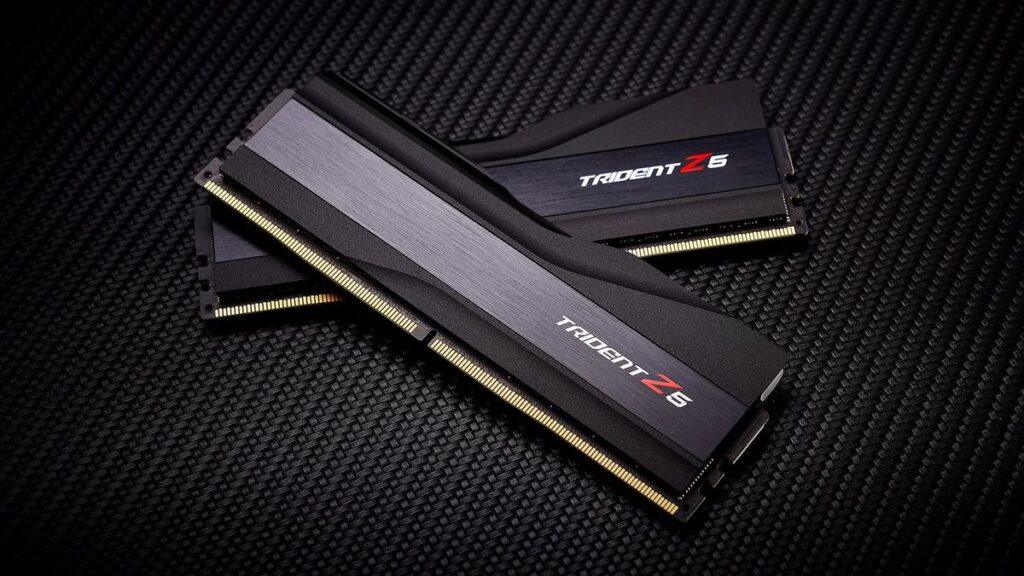- G.Skill Trident Z5 DDR5 was overclocked to 6027MHz or 12,054MT/s
- This was achieved using air cooling only, without the need for liquid nitrogen.
- However, there is some sort of problem in how the CPU was configured.
G.Skill has set records again with its DDR5 RAM, this time with a truly impressive overclock that doesn’t use any exotic cooling.
This feat was achieved using G.Skill Trident Z5 DDR5 by an expert overclocker from Indonesia, a certain ‘speed.fastest’, who managed to boost the RAM up to 6027MHz (or 12,054MT/s).
That’s not a DDR5 world record, as ranked by HWBot; In fact, it is ranked 16th in the world (at the time of writing), but all of the fastest speeds achieved used liquid nitrogen cooling.
The key point here is that only air cooling was used, with one fan pointing at the memory (and water cooling for the CPU). In other words, this was a normal PC (well, almost; it was normal in terms of components, but not configuration, and we’ll come back to that in a moment).
As G.Skill tells us: “Previously, reaching the DDR5-12000 milestone required a more extreme cooling method, such as liquid nitrogen or dry ice. “These incredible achievements with air cooling demonstrate the incredible overclocking potential of modern hardware.”
The record was achieved with a single 24GB RAM unit from a 2 x 24GB Trident Z5 DDR5-8000 CL38 kit. Speed.fastest ran that memory module on a PC with an Intel Core Ultra 9 285K processor and an Asus ROG Maximus Z890 Apex motherboard.
A separate attempt by another overclocker, this time it was Canada-based ‘saltycroissant’, reached 12,050MT/s, again with air cooling, with the same RAM module (this time on an ASRock Z890 Taichi OCF motherboard).
Analysis: still impractical, but very interesting
In case you were thinking about trying this at home, or going to this level, as VideoCardz points out, although this is air cooling and nothing fancy is used to push DDR5 to incredible speeds, there is a problem. That is, the CPU runs a single core at 400 MHz, which obviously wouldn’t be good in any real-world usage scenario.
So while exotic cooling isn’t needed, this is still an achievement that isn’t useful in a practical sense other than to show off the overall overclocking potential of DDR5 on an Arrow Lake system, which is still really impressive. The Blue Team certainly has a victory on their hands in that regard, even if the launch of Arrow Lake has been, shall we say, less than ideal (especially given the backdrop of the previous generation’s instability issues).




